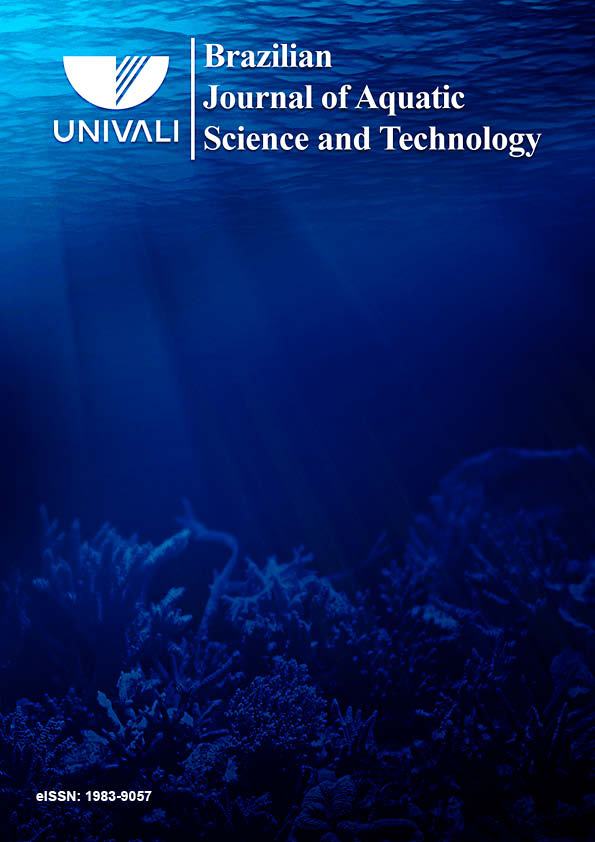Melia azedarach L. Fruit Extract as a potencial candidate in controlling the Neuraeschna Hagen, 1867 (Odonata: Aeshnidae), predominant predators for fish fingerlings
DOI:
https://doi.org/10.14210/bjast.v20n1.4465Abstract
Odonata larvae in fishponds prey on fish fingerlings and decrease the profits from production. With the goal of eliminating these larvae from fishponds, large quantities of pesticides are applied. These products are toxic to fish and have unpredictable effects on the food chain. The objective of this study is to evaluate the effect of the plant extract of fruits of Melia azedarach (CEE) and of methyl parathion (MP) adsorbed in silica in the control of Neuraeschna larvae (Odonata: Aeshnidae). The LC50-18h for CEE was 0.57 mg L-1, and for MP the LC50-12h was 0.17 mg L-1. Two compounds with the highest concentration were isolated and identified from CEE, linoleic acid and melianone. The latter is a triterpene precursor of limonoids, compounds with insecticide properties. The substitution of synthetic pesticides for natural products is a path towards the sustainability of fish farming.
Downloads
Published
Issue
Section
License
Authors who publish with this journal agree to the following terms:
1. Authors retain copyright and grant the journal right of first publication with the work simultaneously licensed under a Creative Commons Attribution License that allows others to share the work with an acknowledgement of the work's authorship and initial publication in this journal.
2. Authors are able to enter into separate, additional contractual arrangements for the non-exclusive distribution of the journal's published version of the work (e.g., post it to an institutional repository or publish it in a book), with an acknowledgement of its initial publication in this journal.
3. Authors are permitted and encouraged to post their work online (e.g., in institutional repositories or on their website) prior to and during the submission process, as it can lead to productive exchanges, as well as earlier and greater citation of published work (See The Effect of Open Access).

